
How to Use MQ-136: Examples, Pinouts, and Specs
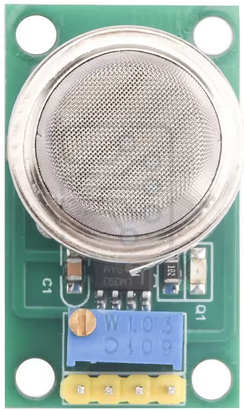
 Design with MQ-136 in Cirkit Designer
Design with MQ-136 in Cirkit DesignerIntroduction
The MQ-136 Gas Sensor Module by DIYmore is an electronic device designed to detect the presence of hydrogen sulfide (H2S) in the air. This sensor is widely used in industrial applications, environmental monitoring systems, and by hobbyists for safety and air quality projects. The MQ-136 sensor is sensitive to H2S gas concentrations and can be used to alert users to hazardous conditions.
Explore Projects Built with MQ-136
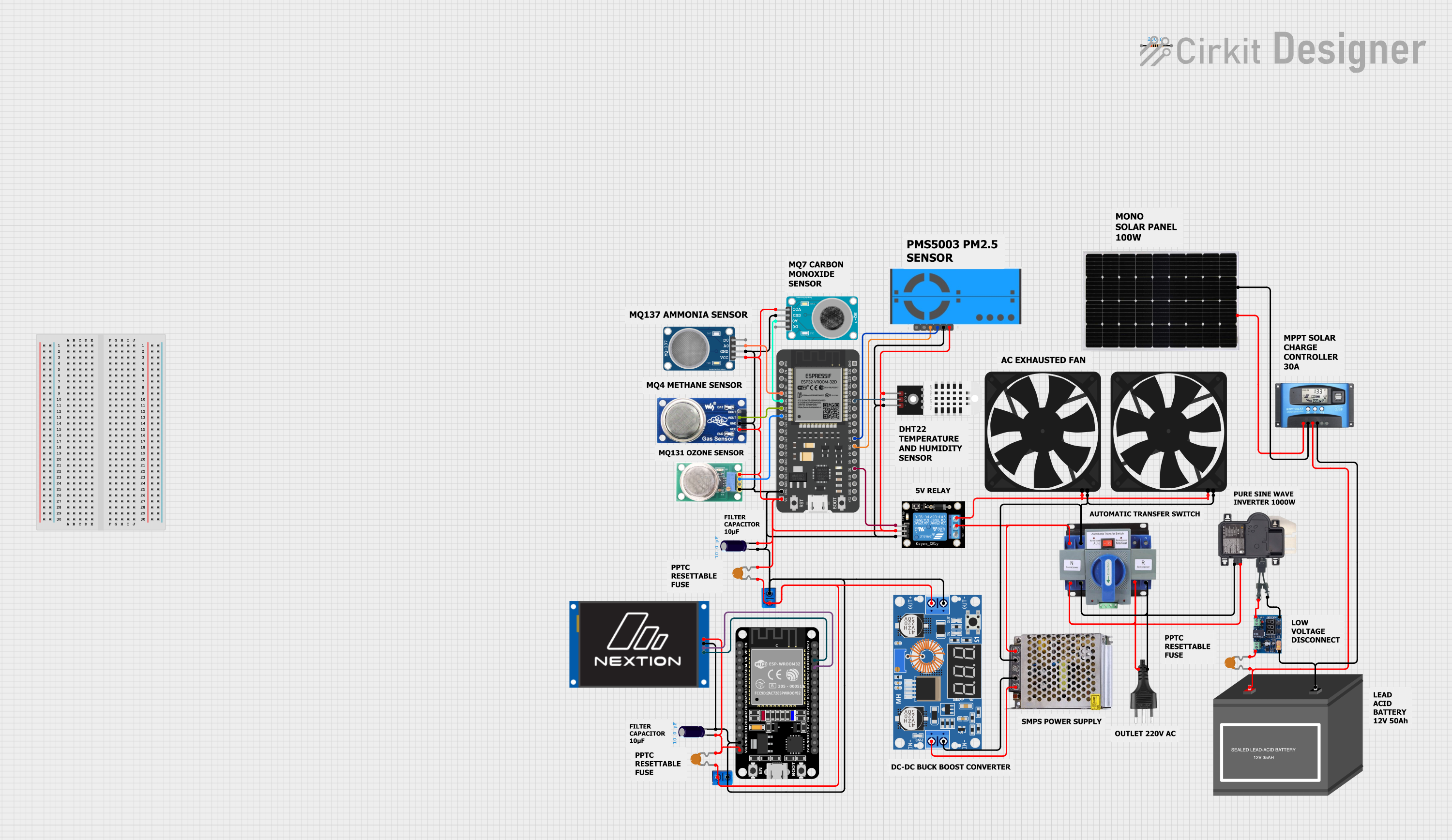
 Open Project in Cirkit Designer
Open Project in Cirkit Designer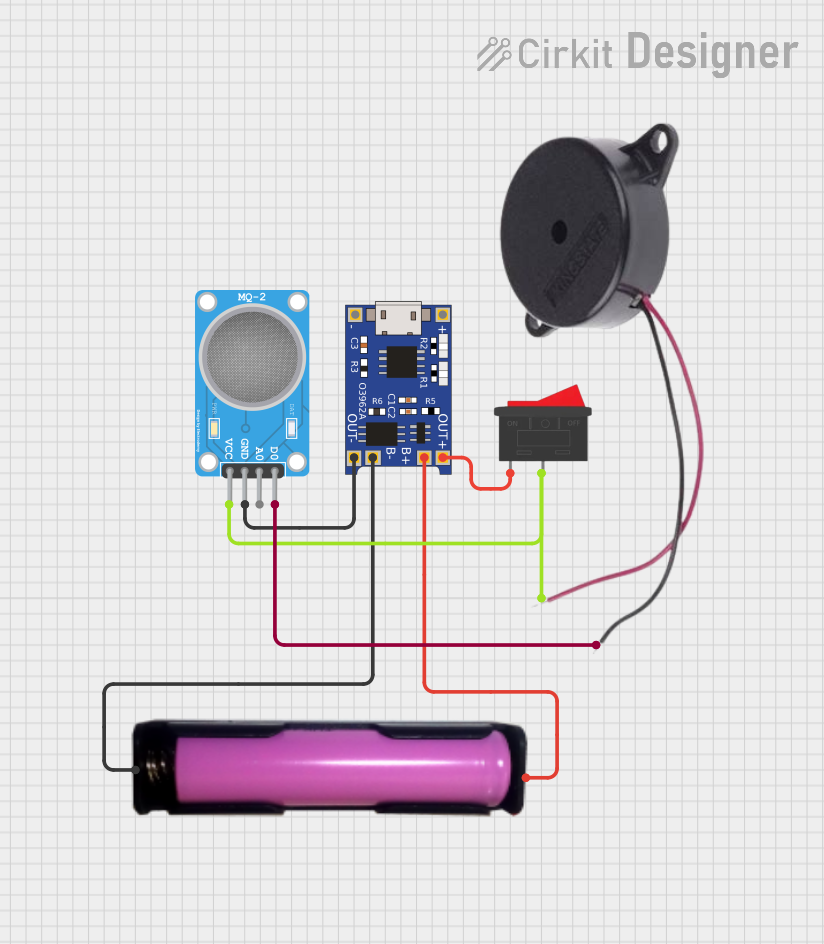
 Open Project in Cirkit Designer
Open Project in Cirkit Designer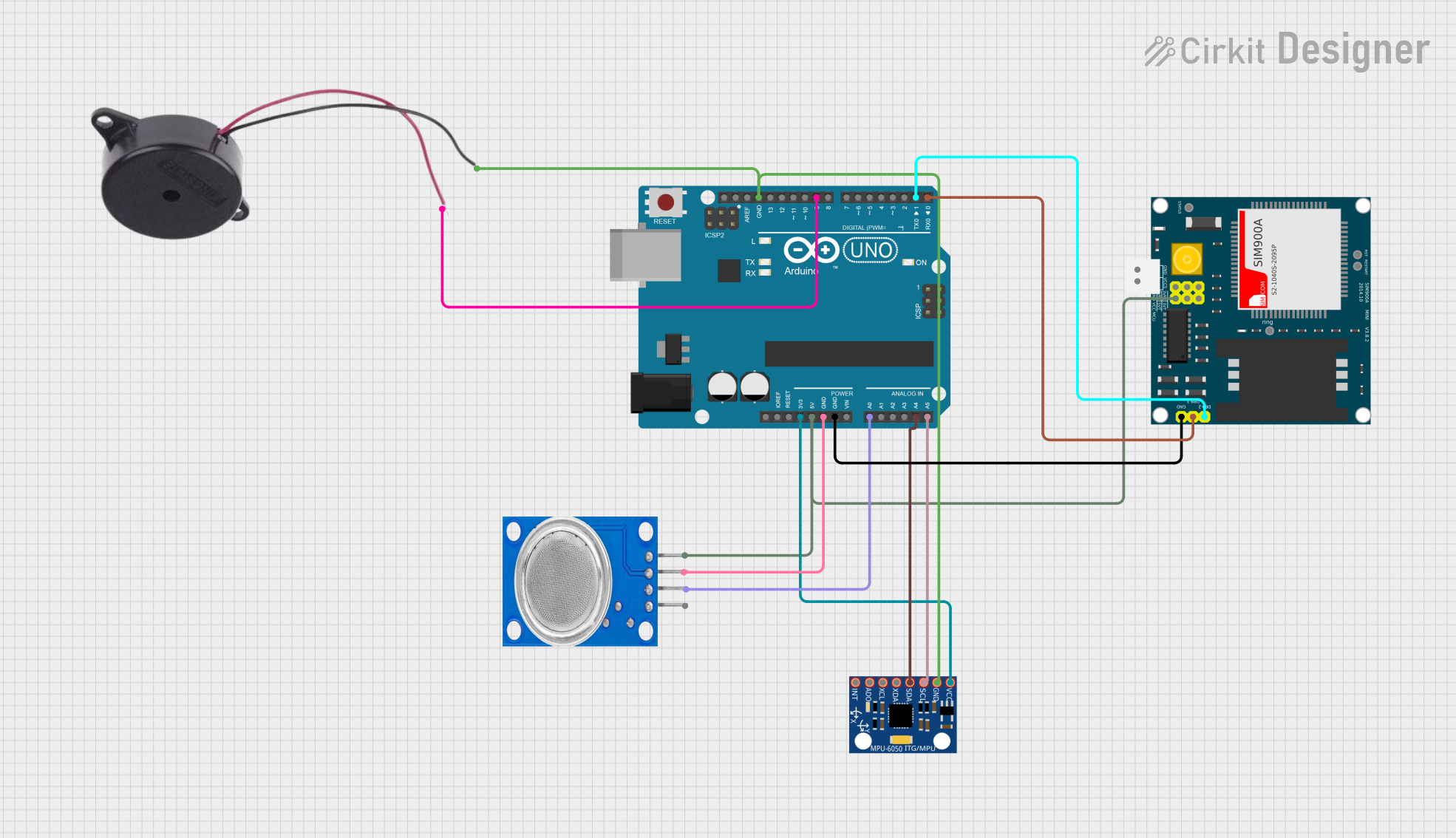
 Open Project in Cirkit Designer
Open Project in Cirkit Designer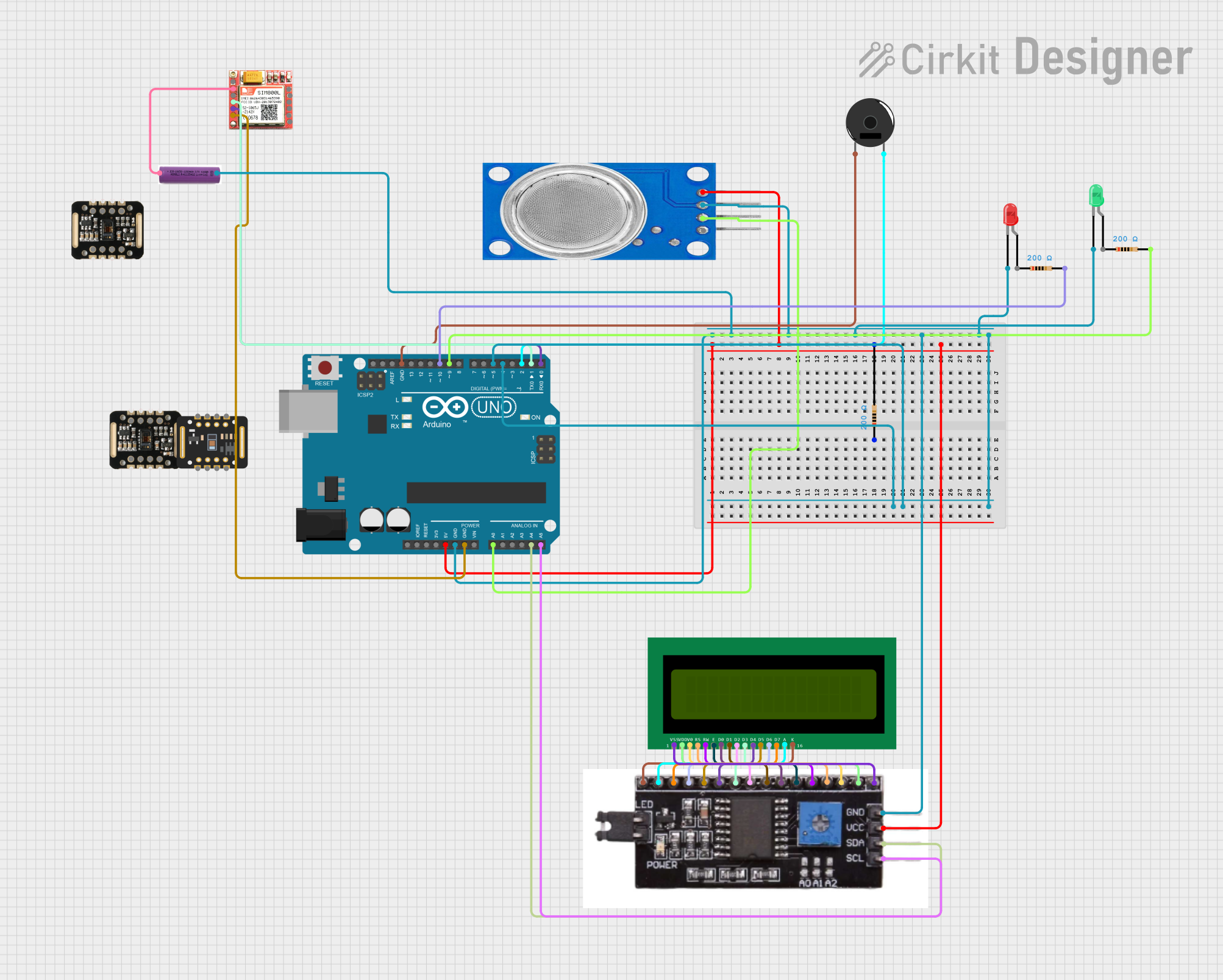
 Open Project in Cirkit Designer
Open Project in Cirkit DesignerExplore Projects Built with MQ-136

 Open Project in Cirkit Designer
Open Project in Cirkit Designer
 Open Project in Cirkit Designer
Open Project in Cirkit Designer
 Open Project in Cirkit Designer
Open Project in Cirkit Designer
 Open Project in Cirkit Designer
Open Project in Cirkit DesignerCommon Applications
- Industrial safety systems
- Environmental air quality monitoring
- Gas leak detection in residential and commercial premises
- DIY projects involving air quality measurements
Technical Specifications
Key Technical Details
- Target Gas: Hydrogen sulfide (H2S)
- Detection Range: 1 ppm to 10 ppm H2S
- Preheat Duration: 20 minutes (minimum)
- Supply Voltage: 5V ± 0.1V
- Heater Voltage: 5V ± 0.1V
- Heater Current: 150mA (typical)
- Heater Power Consumption: 0.75W (typical)
- Load Resistance: Adjustable via onboard potentiometer
- Operating Temperature: -20°C to 50°C
Pin Configuration and Descriptions
| Pin Number | Pin Name | Description |
|---|---|---|
| 1 | VCC | Power supply (5V) |
| 2 | GND | Ground |
| 3 | DOUT | Digital output (TTL logic level) |
| 4 | AOUT | Analog output (proportional to gas level) |
Usage Instructions
Integration with a Circuit
- Power Supply: Connect the VCC pin to a 5V power source and the GND pin to the ground.
- Signal Output: The MQ-136 provides two types of outputs:
- Digital Output (DOUT): Connect to a digital input pin on a microcontroller. The sensor outputs a low level when the H2S concentration reaches or exceeds a certain threshold, which can be adjusted using the onboard potentiometer.
- Analog Output (AOUT): Connect to an analog input pin on a microcontroller to get a variable voltage that is proportional to the H2S concentration.
Important Considerations and Best Practices
- Preheating: Allow the sensor to preheat for at least 20 minutes to stabilize its readings.
- Calibration: Calibrate the sensor in an environment with a known H2S concentration or in fresh air for baseline readings.
- Ventilation: Ensure proper ventilation around the sensor to prevent saturation and to allow for accurate readings.
- Avoid Harsh Conditions: Protect the sensor from exposure to high concentrations of corrosive gases, high humidity, and extreme temperatures.
Example Code for Arduino UNO
// MQ-136 Gas Sensor Example Code for Arduino UNO
int analogPin = A0; // Analog input pin connected to AOUT on the sensor
int digitalPin = 2; // Digital input pin connected to DOUT on the sensor
int sensorValue = 0; // Variable to store the sensor value
void setup() {
pinMode(digitalPin, INPUT); // Set the digital pin as input
Serial.begin(9600); // Start serial communication at 9600 baud
}
void loop() {
sensorValue = analogRead(analogPin); // Read the analog value from sensor
Serial.print("Analog Value: ");
Serial.println(sensorValue); // Print the analog value
if (digitalRead(digitalPin) == LOW) { // Check if the digital output is LOW
Serial.println("H2S threshold exceeded!");
}
delay(1000); // Wait for 1 second before the next loop
}
Troubleshooting and FAQs
Common Issues
- Inaccurate Readings: If the sensor provides inconsistent or inaccurate readings, ensure that it has been properly preheated and calibrated. Also, check for any environmental factors that may affect the sensor's performance.
- No Response to Gas: Verify that the sensor is receiving the correct operating voltage and that the pins are connected properly. Additionally, check if the sensor has been exposed to high concentrations of gas, which may have caused sensor poisoning.
Solutions and Tips
- Preheating: Always preheat the sensor before use to ensure accurate readings.
- Calibration: Regularly calibrate the sensor to maintain its accuracy over time.
- Sensor Replacement: The MQ-136 sensor has a limited lifespan. If the sensor fails to respond after troubleshooting, consider replacing it.
FAQs
Q: How often should I calibrate the MQ-136 sensor? A: Calibration frequency depends on the usage and the environment. It is recommended to calibrate the sensor before initial use and periodically during its lifetime.
Q: Can the MQ-136 sensor detect other gases besides H2S? A: The MQ-136 is specifically designed to detect hydrogen sulfide. While it may show some response to other gases, it is not recommended to use it for detecting gases other than H2S.
Q: What is the expected lifespan of the MQ-136 sensor? A: The lifespan of the sensor can vary based on usage and environmental conditions. Typically, these sensors can last for several months to a couple of years with proper maintenance and calibration.